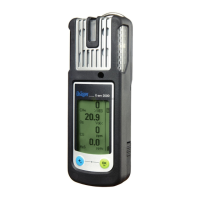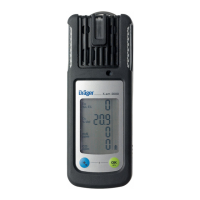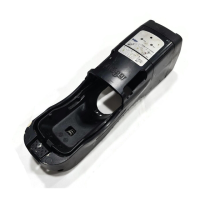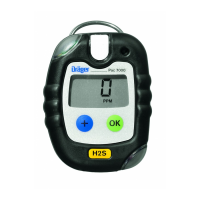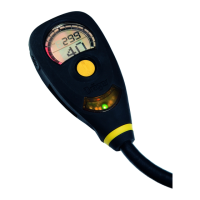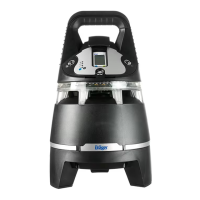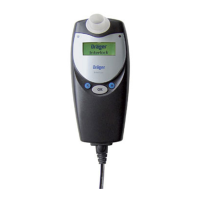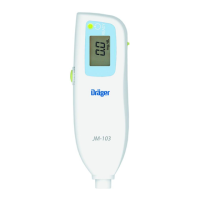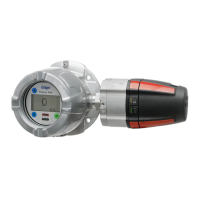51
— Soll mit dem Smart PID Sensor ein kundenspezifisches Gas de-
tektiert werden, das nicht im Sensordatensatz aufgeführt ist, kön-
nen dafür vorgesehene Gase (VOC1, VOC2, …) entsprechend
konfiguriert werden.
● Nacheinander » Einstellungen \ Sensoren \ PI-IBUT \ Gas Kfg. «
auswählen und jeweils durch Drücken der Taste »
« aufrufen.
● VOC1 (bzw. VOC2, VOC3) aus der Liste auswählen und mit Taste
» « aktivieren
(» «)
.
● Kurzen Gasnamen (max. 4 Stellen) für das zu messende Gas ein-
geben und mit Taste » « bestätigen.
● Langen Gasnamen (max. 10 Stellen) für das zu messende Gas ein-
geben und mit Taste » « bestätigen.
● Gasspezifischen Responsefaktor des zu messenden Gases ein-
geben und mit Taste » « bestätigen.
Informationen zu den Responsefaktoren erhalten Sie bei der zu-
ständigen Dräger Safety Vertretung. Der Responsefaktor kann
vom Benutzern auch selbst ermittelt werden (siehe untenstehende
Anleitung).
● Gewünschte Einheit aus der Liste auswählen und mit Taste » «
aktivieren
(» «)
.
● Falls eine gewichtsorientierte Einheit ausgewählt wurde, Molge-
wicht des zu messenden Gases mit den Tasten » « und » «
einstellen und mit Taste » « bestätigen.
● Messbereichsendwert mit den Tasten » « und » « einstellen
und mit der Taste » « bestätigen.
● Alarmschwelle A2 mit den Tasten » « und » « einstellen und
mit der Taste » « bestätigen.
VORSICHT
Die Eingabe eines falschen Wertes führt zu einer falschen Gasan-
zeige!
OK
OK
OK
OK
OK
OK
M
OK
M
OK
M
OK
— If the Smart PID sensor is to be used for detecting a customer-spe-
cific gas which is not entered in the sensor data base, gases pro-
vided for this purpose (VOC1, VOC2, …) can be configured
accordingly.
● Select the menu items » Settings \ Sensors \ PI-IBUT \ Gas cfg. «
in this order, pressing the »
« key after each selection.
● Select VOC1 (or VOC2, VOC3) from the list and press the » «
key to activate it
(» «)
.
● Enter the short gas name (max. 4 characters) for the gas to be
measured and press the » « key to confirm it.
● Enter the long gas name (max. 10 characters) for the gas to be
measured and press the » « key to confirm it.
● Enter the gas-specific response factor of the gas to be measured
and press the » « key to confirm it.
Information on the response factors is available from your local
Dräger Safety branch office. The response factor can also be de
-
termined by the user (see below-mentioned instructions).
● Select the desired unit from the list and press the » « key to ac-
tivate it
(» «)
.
● If a weight-oriented unit has been selected, enter the molar weight
of the gas to be measured by pressing the » « and » « keys
and press the » « key to confirm the setting.
● Enter the measuring range's end value by pressing the » « and
» « keys and press the » « key to confirm the setting.
● Enter the alarm setpoint A2 by pressing the » « and » « keys
and confirm the setting by pressing the » « key.
CAUTION
If an incorrect value is entered, the gas display may also be incor-
rect!
OK
OK
OK
OK
OK
OK
M
OK
M
OK
M
OK
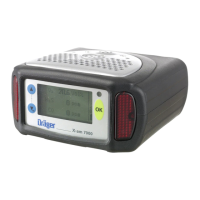
